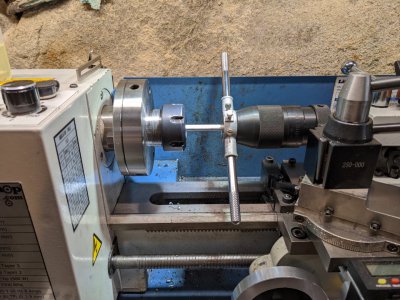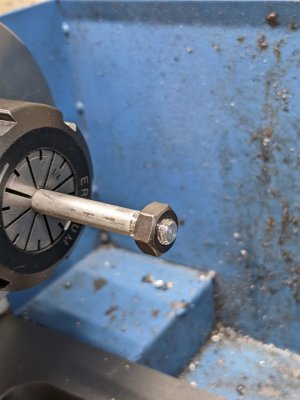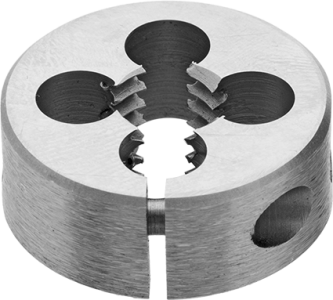Starting a die true to the work is a problem in even the larger sizes, 1" and above. The method I use for smaller screws, Nr 2 and Nr 00 should work for a middlin' size like Nr 4. Start with the proper size, .060 +(4x.013). That yields 0.112". Then extract the few thou for top clearance. A very few thou for Nr 4. Then for the first 1/4 inch, remove down to .113 less .025 (.088") for a slim fit internally. Once the die is slid onto the undersized section, start cutting. For something as large as Nr 4, I would put the stock in a lathe and hold the die by hand or maybe a pair of "Channel-Locks" so it can be released quickly.
The above is for making long threads, like all-thread. For machine screws with 4 or 5 pitches, I just chuck the part and use the face of the tailstock chuck to square the die. There are occasional times when the screw end is exposed. There I trim the end as described above, run the die, and before removing the die clip off the undersized portion and excess length and trim up with a file. It works well enough for the small sizes I deal with. Nr 4 should do well enough.
For long threads I often use oversized stock. Just trueing up a half inch or so for the die to bite. The most common thread I cut is 2-56. The rod is 3/32 brass. At ~.093, a fuzz over size for Nr 2 at .086. Once the die is started, it will shave off that little bit of extra. Be advised, brass is soft enough for that "shenanigan". As is raw aluminium. On the other hand, steel is tougher and may not shave so easily.
EDIT: adjusted Screw sizes
.




